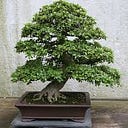How Professional Wrestling Influenced Japan. Part 1: Rikidozan. Lifting Japan Post-WWII.
Rikidozan is a mammoth in the professional wrestling community. He was named the third greatest professional wrestler of all time by The Wrestling News Observer and has been inducted into every major professional wrestling hall of fame. His match with The Destroyer in 1963 is the highest rated Japanese cable rating of all time drawing a staggering seventy-million viewers which accounts for nearly 70% of the entire population at the time. Only a year later he was murdered by a member of the yakuza.
So why did he strike a cord so much with Japan? Quite simply Japan needed a hero. When Rikidozan made his debut in 1951 Japan was still reeling from the devastating loss in World War II. Not only did they have to deal with the destruction of the fire-bombings as well as the atomic blasts in Hiroshima and Nagasaki. But the defeat was a huge blow to Japan’s image. Japan had to restructure its political system away from the monarchy towards a democratic system. Japanese war officials were tried and executed as war criminals. They were forced to de-militarise and even to this day are still occupied by American forces. The image of an all-powerful, conquering Japan was burnt up in a matter of months.
Enter Rikidozan a former sumo wrestler. In his promotion JWA (Japan Pro Wrestling Alliance) he battled American invaders as an unstoppable Japanese superhero. He quickly managed to draw audiences and captured the hearts and minds of the Japanese public. His fame grew to an international level when he battled legendary American wrestler Lou Thesz in 1958. The bout drew a whopping 87.0 rating in Japan and his victory ensured that he was cemented as a top-level performer both in Japan and overseas. Despite his wrestling persona and the connection with Japanese nationalism, Rikidozan is actually of North Korean descent.
The massive amount of fame came at a great cost to Rikidozan. From his days as a sumo wrestler he had contacts with the yakuza. He loaned money from them to help fund his wrestling promotion. Later he invested in nightclubs, hotels, and other properties which caused him to rack up a huge debt by the time of his death.
He continued to draw massive crowds and ratings and as his wrestling fame grew so did his public persona. His drinking exploits became legendary and he was a frequent member of the tabloid news. It was a stuck contrast to his image as a national hero. He frequently found himself in bar fights or known to be dating multiple women at the same time. In many ways, he was a precursor to wrestlers like Ric Flair who thrived on their drinking and womanizing reputation. In a tale familiar to many wrestling fans by the time of his death Rikidozan was dependant on both alcohol and painkillers.
Rikidozan’s death was a tragic case of a situation escalating for no reason. An argument with a low-level yakuza member led to Rikidozan being stabbed in the stomach. Instead of going to a hospital, he demanded his friend take him to a local women’s clinic to avoid the story going public. He was stitched up and instructed to take it easy until his wounds could heal. Unfortunately, he didn’t listen and continued his drinking habits which caused a stomach infection and he passed away on December 15th, 1964, just over eighteen months after his legendary match with The Destroyer. He was thirty-nine years old.
His death would spark national mourning and heaped on the tabloid interest. His funeral was attended by 12,000 people and drew international press. His impact on professional wrestling is almost unmatched. His legacy lived on in the legendary careers of those he trained such as Antonio Inoko and Giant Baba who both went on the become iconic figures in Japanese pop culture.
Japan experienced an extraordinary period of economic growth considering the devastation of World War II and this period helped shape modern Japan. When examining how Japan crossed from the horrors of World-War Two to the technologically advanced thriving country we saw only a few decades later, there are of course far greater forces than a professional wrestler that enforced that process. But Rikidozan showed the Japanese public they still had a lot to be proud of. He helped carry some of the burden the people felt and provided a much-needed outlet against the foreign occupiers.

